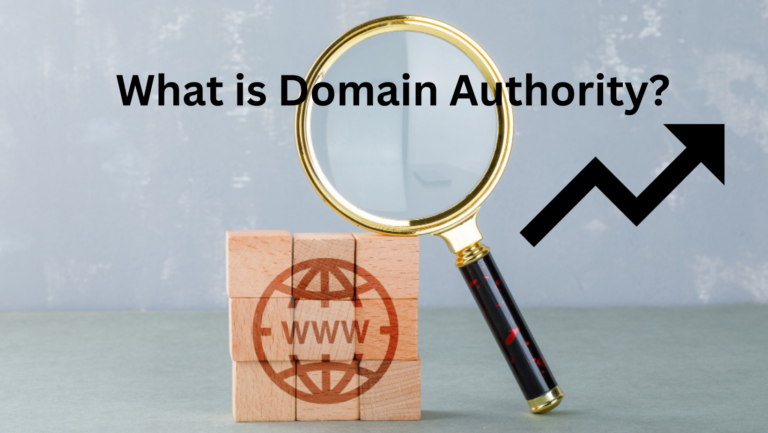What is White Hat vs Black Hat SEO – Marketscrawl
White Hat and Black Hat SEO are contrasting methodologies in the SEO landscape. White Hat SEO focuses on ethical strategies aligned with search engine guidelines, emphasizing quality content, proper keyword usage, and organic link building for SEO. It prioritizes user experience, aiming for long-term results and credibility. Conversely, Black Hat SEO employs manipulative techniques that breach search engine rules, like keyword stuffing, cloaking, or buying links, aiming for quick but unsustainable ranking gains. Google penalizes Black Hat practices as they violate its guidelines, risking a site’s visibility and reputation. While White Hat strategies build trust and sustainable growth, Black Hat tactics may yield short-term gains but lead to severe penalties, potentially causing a site to be removed from search results.
What is White Hat SEO and Black Hat SEO?
White Hat SEO: Building Legitimacy
White Hat SEO embodies ethical practices that align with search engine guidelines. It emphasizes long-term strategies aimed at enhancing a website’s visibility through legitimate means. This method involves the creation of high-quality, relevant content that caters to users’ needs and interests. Site optimization, including the improvement of site structure, loading speed, and mobile-friendliness, is a core aspect. Additionally, White Hat SEO emphasizes acquiring backlinks naturally, through authentic relationships and content merit. This approach prioritizes user satisfaction and credibility, aiming for sustainable growth in search rankings. Google rewards these efforts, valuing user-centric experiences and content authenticity, thereby bolstering a site’s reputation and visibility over time.
Furthermore, White Hat SEO involves organic link-building strategies, focusing on earning backlinks naturally through quality content and reputable connections. The primary goal is to establish a strong online presence built on trust, authority, and transparency, aligning with search engine guidelines. By consistently delivering valuable content and adhering to ethical optimization practices, websites employing White Hat SEO can foster enduring relationships with users and improve their search visibility over time.
White Hat SEO involves
1. Quality Content Creation: White Hat SEO centers on generating high-quality, original content that fulfills user intent. This involves creating informative, engaging, and relevant material tailored to the audience’s needs, which can include blog posts, articles, videos, or infographics.
2. Site Optimization: It involves optimizing various on-page elements like meta tags, titles, headers, and image alt attributes to enhance site visibility and user experience. Prioritizing mobile responsiveness, fast loading times, and intuitive navigation are crucial facets of site optimization.
3. Natural Link Building: White Hat SEO emphasizes earning backlinks naturally through merit-based methods. This involves creating shareable, valuable content that attracts organic links from reputable websites, rather than buying or manipulating links through dubious means.
4. Adherence to Guidelines: Operating within the boundaries set by search engines like Google, White Hat SEO strictly adheres to their guidelines and policies. This includes avoiding any deceptive or manipulative practices that could lead to penalties or a loss in search rankings.
5. User-Centric Approach: Understanding and catering to user intent is paramount. White Hat SEO strategies focus on providing users with relevant, valuable, and authoritative information, ultimately aiming to enhance the overall user experience.
6. Long-Term Results: Unlike Black Hat techniques that promise quick wins but risk penalties, White Hat SEO strategies aim for sustainable, long-term growth. They prioritize building a solid online presence, establishing authority, and fostering trust among users and search engines alike.
7. Continuous Improvement: This approach involves continual monitoring, analyzing performance metrics, and adapting strategies to align with evolving search engine algorithms and user behavior. Regular updates and improvements maintain relevance and visibility in the ever-changing digital landscape.
Black Hat SEO: Quick Gains, Risky Moves
Black Hat SEO revolves around exploiting loopholes in search engine algorithms to rapidly boost website rankings. It employs unethical tactics like keyword stuffing (repeating keywords excessively), cloaking (presenting different content to users and search engines), and purchasing links to deceive search algorithms. While these strategies might offer swift improvements in visibility, they breach search engine guidelines, risking severe penalties such as lower rankings or even removal from search results. The focus is on immediate gains, disregarding user experience and long-term sustainability. Despite the short-term advantages, the high risk of penalties makes Black Hat SEO an imprudent and unsustainable approach to online optimization.
Buying links is yet another Black Hat technique where websites pay for backlinks, attempting to artificially inflate their domain authority and rankings. However, these methods go against search engine guidelines and can lead to severe consequences, including penalties or even complete removal from search results. While tempting for immediate results, the risks associated with Black Hat SEO make it an unsustainable and ill-advised strategy in the long run.
Types of Black Hat SEO activities that one should avoid:
1. Keyword Stuffing: This practice involves excessively loading web pages, meta tags, or alt tags with keywords to manipulate search engine rankings. It disrupts the natural flow of content, making it unnatural and challenging for users to read. The goal is to trick search engines into believing that the page is highly relevant for those specific keywords, thus improving its ranking. However, this results in poor user experience and doesn’t genuinely provide valuable content to the audience.
2. Cloaking: Cloaking is a deceptive technique where different content or URLs are shown to search engines and users. For instance, while search engine crawlers might see one version of the website with optimized keywords, users might encounter different content or redirects when visiting the same URL. This practice aims to mislead search engines into ranking a page for keywords that aren’t genuinely relevant to the actual content, undermining the trustworthiness of search results.
3. Link Buying: This involves purchasing links from other websites with the intention of manipulating a site’s backlink profile to improve search rankings. These bought links are often from low-quality or unrelated sites, and the practice goes against search engine guidelines. While backlinks are crucial for SEO, the quality and relevance of these links are vital. Purchasing links for the sole purpose of improving rankings violates this principle and can result in penalties.
4. Spamming and Automation: Black Hat SEO practices also include using automated software or bots to generate content, create links, or spam forums, comment sections, or social media platforms with links. These automated techniques aim to manipulate search engine algorithms by generating a large volume of content or links quickly. However, these methods disregard content quality and relevancy, ultimately leading to poor user experience and violating search engine guidelines.
Overall, these tactics prioritize manipulating search engine algorithms for short-term gains but often compromise the user experience and violate search engine guidelines, risking long-term damage to a website’s credibility and visibility.
What are Google’s Search Essentials and Spam Policies?
Google’s Search Essentials and Spam Policies underline the significance of user trust and content authenticity. The search engine strives to deliver the most relevant, valuable, and trustworthy results to users. Consequently, Google continuously refines its algorithms to recognize and penalize websites engaging in deceptive practices, particularly Black Hat SEO tactics.
By prioritizing high-quality, original content and user-centric experiences, Google aims to ensure that its search results provide accurate and valuable information to users. This commitment translates into the development of algorithms that detect and mitigate attempts to manipulate rankings through tactics such as keyword stuffing, link schemes, cloaking, and other spammy practices.
The search engine’s spam policies are designed to maintain the integrity of search results by discouraging unethical and manipulative SEO strategies. Websites found violating these policies risk being penalized or even removed from search results, emphasizing Google’s dedication to fostering a trustworthy and relevant online environment for users.
Here are pointers regarding Google’s Search Essentials and Spam Policies:
1. Content Relevance and Quality: Google prioritizes content that meets user needs. It assesses the relevance and quality of content by analyzing factors like originality, depth, accuracy, and engagement metrics such as time spent on the page, bounce rates, and user interactions. High-quality content that genuinely addresses user queries stands a better chance of ranking well.
2. User Experience: Google emphasizes user-centric experiences. Factors such as page loading speed, mobile-friendliness, ease of navigation, and overall website usability contribute significantly to rankings. Sites that offer a seamless and enjoyable browsing experience tend to perform better.
3. Backlink Profile Integrity: Google evaluates a website’s backlink profile to gauge its domain authority and credibility. Natural, organic backlinks from reputable and relevant sources are valued. Conversely, attempts to manipulate rankings through purchased links, link schemes, or spammy link practices can result in penalties.
4. Keyword Relevance and Natural Integration: While keywords remain essential for SEO, Google emphasizes natural and relevant integration. Content should serve the user’s intent, answering their queries without resorting to keyword stuffing or forced placement that disrupts readability.
5. Transparency and Authenticity: Websites that prioritize transparency, credibility, and authenticity in their content and practices are favored. This includes accurate and clear information about the website’s purpose, expertise, authorship, and contact details.
6. Penalties and Algorithm Updates: Google implements penalties for websites violating its guidelines. These penalties can range from lowered rankings to complete removal from search results. Furthermore, Google regularly updates its algorithms to refine its ability to detect and combat Black Hat SEO tactics and spam, promoting fairness and accuracy in search results.
By adhering to these principles, website owners can align their strategies with Google’s standards, ensuring better visibility and trustworthiness in search results.
Is Black Hat SEO Worth It?
The allure of immediate results in Black Hat SEO might seem tempting, but the risks far outweigh the benefits. Engaging in such practices can indeed yield quick but short-lived advancements in search engine rankings. However, the long-term consequences are severe and often detrimental to a website’s online presence.
The Risks:
1. Penalties and Bans: Search engines like Google continuously refine their algorithms to detect and penalize manipulative practices. Websites employing Black Hat SEO techniques risk severe penalties, including lowered rankings or complete removal from search results.
2. Reputation Damage: Black Hat tactics compromise a website’s credibility and trustworthiness. Visitors encountering spammy or irrelevant content might perceive the site negatively, leading to decreased user trust and potential loss of traffic.
3. Instability: The gains achieved through Black Hat methods are typically short-lived. Algorithms evolve, and once detected, these tactics cease to be effective, leaving the website vulnerable to sudden drops in rankings and traffic.
4. Long-Term Consequences: Recovering from penalties or bans can be arduous. Rebuilding trust with search engines and users, removing penalties, and regaining lost rankings and traffic can take significant time and resources.
The risks associated with Black Hat SEO far outweigh any short-term benefits. Investing effort and resources in ethical, White Hat SEO practices ensures sustainable growth, credibility, and long-term success for a website.
How does Google Detect Web Spam and Black Hat SEO?
Google has intricate algorithms that continuously evolve to detect and counteract web spam and Black Hat SEO techniques. These algorithms scrutinize various elements of websites to identify and penalize any attempts to manipulate search engine rankings.
Key Detection Methods:
1. Algorithmic Assessment: Google’s algorithms are designed to evaluate websites based on a range of factors, including content quality, relevance, keyword usage, and backlink profiles. Suspicious patterns, such as keyword stuffing, hidden text, or irrelevant links, are flagged for further review.
2. Manual Review: Human reviewers, often referred to as quality raters, assess websites to validate the accuracy of algorithmic findings. These reviewers follow guidelines to evaluate the quality, relevance, and trustworthiness of the content.
3. Regular Updates: Google frequently updates its algorithms to improve their ability to identify and penalize Black Hat tactics. These updates aim to refine detection methods and ensure that the search results prioritize high-quality, authentic content.
4. Machine Learning: Google employs machine learning and AI to enhance its algorithms’ capabilities. These technologies enable systems to learn from patterns and user behavior, allowing for more accurate identification of spammy or manipulative practices.
By utilizing a combination of automated algorithms, manual reviews, and cutting-edge technologies, Google strives to maintain the integrity of its search results, promoting high-quality, user-centric content while penalizing attempts to game the system with Black Hat SEO strategies.
White Hat SEO: Sustainable Growth
White Hat SEO operates within search engine guidelines, emphasizing ethical and legitimate strategies to improve a website’s visibility. It prioritizes creating valuable, user-centric content relevant to a target audience’s needs. This approach involves meticulous keyword research, ensuring content aligns with user search intent while avoiding keyword stuffing.
Moreover, White Hat SEO fosters organic link-building through genuine engagement and relationships, focusing on earning backlinks naturally from authoritative and relevant websites. It emphasizes a user-friendly website structure, optimizing for mobile responsiveness, fast loading speeds, and easy navigation.
Ultimately, White Hat SEO aims for sustainable growth by building a strong foundation of credibility and trust with both users and search engines. This ethical approach not only leads to higher rankings but also maintains a website’s integrity and reputation over time, fostering lasting success in the digital landscape.
Wrap Up
It’s really important to know the difference between White Hat and Black Hat SEO. Black Hat might promise fast results, but it’s risky. Using shady tactics can get your site penalized by search engines. On the other hand, White Hat SEO focuses on ethical strategies. It’s about playing by the rules and building your website’s reputation in a sustainable way. Even though it might take longer to see results, White Hat practices ensure long-term growth and trustworthiness online. So, choosing the right approach, like White Hat SEO, is crucial for your website’s success and credibility.







